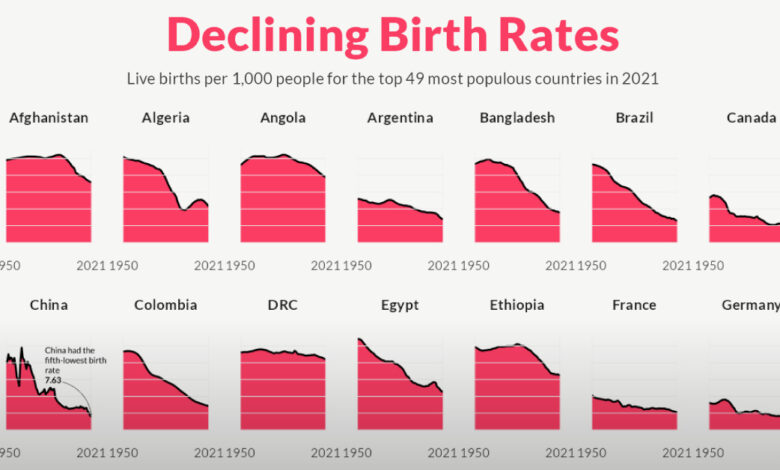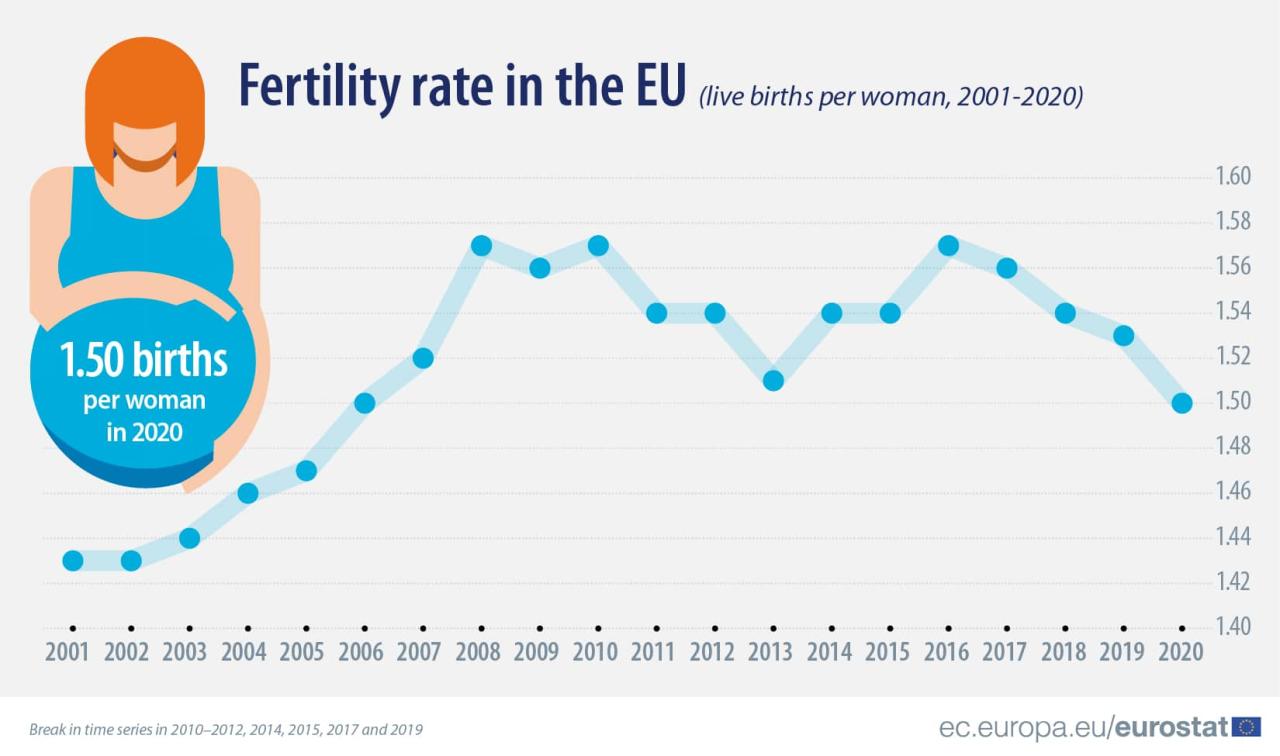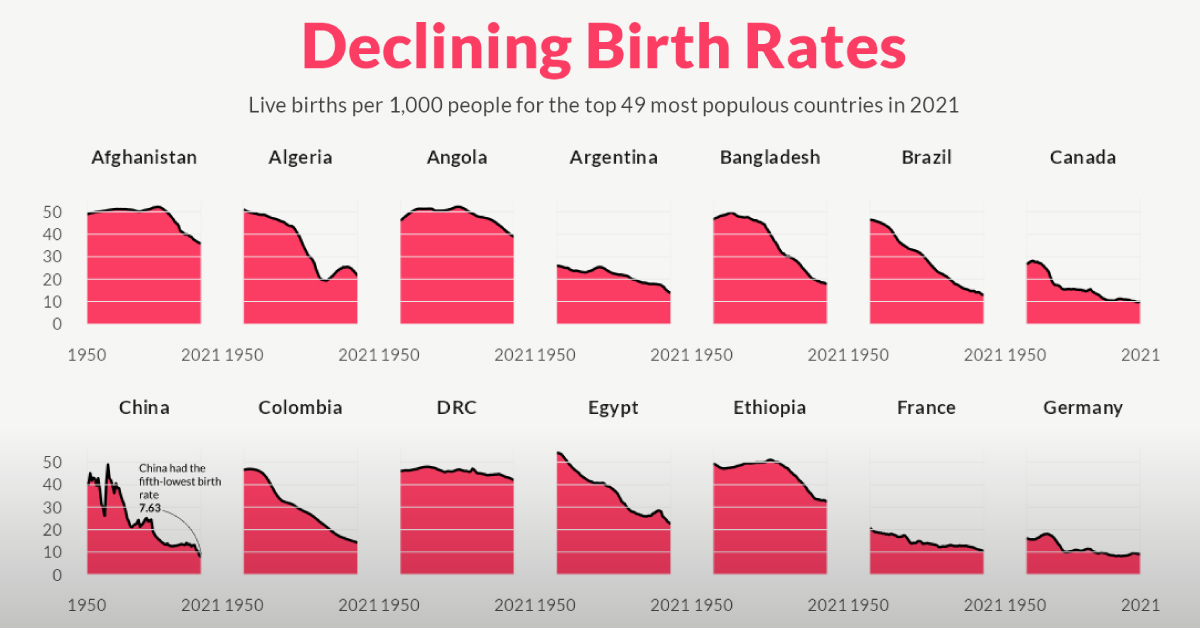
Can the Rich World Escape Its Baby Crisis?
Can the rich world escape its baby crisis? It’s a question hanging heavy in the air, a looming demographic shadow over many developed nations. Declining birth rates are no longer a distant concern; they’re a present reality impacting economies, social structures, and the very fabric of our societies. This isn’t just about numbers; it’s about the future – our future – and the choices we make today that will shape tomorrow.
From soaring housing costs and crippling student debt to evolving societal expectations surrounding parenthood and the increasingly prominent child-free lifestyle, the factors contributing to this crisis are complex and interwoven. We’ll delve into the economic pressures, societal shifts, government policies, healthcare access, and even the growing influence of environmental concerns on family planning decisions. It’s a multifaceted puzzle, and piecing together the solution requires a nuanced understanding of the forces at play.
Economic Factors Contributing to Low Fertility Rates

The declining birth rates observed across many wealthy nations are a complex issue, with economic factors playing a significant role. A deeper understanding of these economic pressures is crucial for developing effective policies to address this demographic shift. This section will explore the key economic influences impacting family planning decisions in developed countries.
Economic Inequality and Declining Birth Rates
Economic inequality significantly impacts fertility rates. In societies with vast disparities in wealth, those in lower socioeconomic brackets often face greater challenges in affording childcare, housing, and education, making it harder to plan for and raise children. The stress associated with financial insecurity can also lead couples to delay or forgo having children altogether. Research consistently demonstrates a negative correlation between income inequality and fertility rates; higher inequality tends to be associated with lower fertility.
For example, countries with strong social safety nets and more equitable income distribution often exhibit higher fertility rates than those with high levels of income inequality and limited social support.
High Housing Costs and Student Debt
The soaring costs of housing and the burden of student loan debt are major obstacles for young adults planning families in many developed nations. High housing prices, particularly in urban areas, make it difficult for young couples to afford a suitable home to raise a family. Similarly, significant student loan debt can delay major life decisions, including starting a family, as individuals prioritize debt repayment over expanding their family.
The cumulative effect of these financial pressures creates a significant barrier to entry for prospective parents. Consider the experience of many millennials and Gen Z in major metropolitan areas, where the cost of living often outpaces salary growth, making homeownership and raising children financially challenging.
Parental Leave Policies and Fertility Rates
Parental leave policies vary significantly across developed countries, and these differences have a notable impact on fertility rates. Generous parental leave policies, which provide paid leave for both parents and allow for flexible work arrangements, can encourage higher fertility rates by reducing the financial and career-related anxieties associated with having children. Conversely, countries with limited or unpaid parental leave often see lower fertility rates, as parents, particularly mothers, face significant career disruptions and financial strain.
For instance, Scandinavian countries with extensive parental leave programs generally have higher fertility rates than countries with less generous policies, such as the United States.
Correlation Between GDP per Capita, Fertility Rates, and Parental Leave Policies
The following table illustrates the correlation between GDP per capita, fertility rates, and parental leave policies in several developed countries. It’s important to note that this is a simplified representation and other factors influence fertility rates beyond these three variables.
The declining birth rates in wealthy nations are a serious issue – can the rich world escape its baby crisis? It's a question that makes me think about the unpredictable nature of economic shifts, like the recent market volatility; check out this article on who shaved 250bn from Kweichow Moutai's market value to see how quickly things can change.
Ultimately, solving the baby crisis requires long-term planning, far beyond the scope of a single market fluctuation.
| Country | GDP per capita (USD) | Fertility Rate | Parental Leave Policy (Summary) |
|---|---|---|---|
| United States | 69,287 | 1.64 | Unpaid leave, limited paid leave in some states. |
| Canada | 54,146 | 1.46 | Paid parental leave, shared between parents. |
| Sweden | 56,315 | 1.78 | Generous paid parental leave, highly flexible, shared between parents. |
| France | 47,692 | 1.84 | Paid parental leave, shared between parents. |
| Japan | 42,688 | 1.30 | Paid parental leave, but often limited in duration and access. |
Social and Cultural Shifts Influencing Family Size
The decline in fertility rates across the developed world isn’t solely an economic issue; profound social and cultural changes are equally responsible. These shifts have fundamentally altered how individuals view family life, career aspirations, and personal fulfillment, leading to a re-evaluation of traditional family structures and the desire for children. Understanding these shifts is crucial to grasping the complexity of the current “baby crisis.”The changing roles of women in the workforce have significantly impacted family size decisions.
Increased educational opportunities and professional advancement have empowered women to pursue careers previously inaccessible to them. This often means delaying childbirth or choosing to have fewer children to balance career ambitions with family responsibilities. The financial burden of childcare, coupled with the often inflexible nature of work-life balance in many developed nations, further complicates the equation. The choice between career progression and motherhood becomes a stark reality for many women, leading to smaller family sizes or forgoing parenthood altogether.
The Rise of Child-Free Lifestyles
The increasing acceptance and visibility of child-free lifestyles are contributing to lower fertility rates. Previously stigmatized, choosing not to have children is now increasingly seen as a valid and acceptable life choice. This shift reflects a broader societal acceptance of diverse life paths and a growing emphasis on individual fulfillment and personal autonomy. Factors such as career aspirations, environmental concerns, and a desire for greater personal freedom are all cited as reasons for choosing a child-free life.
The rise of social media platforms also showcases a wider variety of lifestyles, normalizing child-free living and making it a more visible and relatable option.
Societal Pressures Influencing Family Size Decisions
Societal pressures, both explicit and implicit, significantly influence the decision to have children or not. While some cultures still exert considerable pressure to have large families, perpetuating traditional gender roles, others increasingly normalize smaller families or childlessness. For example, the high cost of raising children in many developed nations can create significant financial strain, leading couples to opt for fewer children or none at all.
Furthermore, the pressure to achieve professional success can conflict with the demands of parenthood, leading to difficult choices. The societal expectation of a “perfect” family life, often portrayed in media, can also create unrealistic expectations and pressure individuals to conform to a particular ideal, regardless of their personal circumstances or desires.
Societal Expectations Surrounding Family Size in Different Developed Nations
The following list compares societal expectations surrounding family size in a few developed nations, highlighting the diversity of norms and pressures:
- United States: While there’s no single dominant expectation, there’s a mix of ideals, ranging from the traditional nuclear family with multiple children to acceptance of smaller families and childlessness. However, financial pressures and limited parental leave often influence decisions towards smaller families.
- France: France has historically favored larger families and offers extensive family support policies, including subsidized childcare and generous parental leave. This contributes to higher fertility rates compared to other developed nations, though still below replacement level.
- Japan: Japan faces a significant demographic crisis with extremely low fertility rates. Societal pressures to succeed professionally, combined with high childcare costs and traditional gender roles, have created a strong disincentive for larger families.
- Sweden: Sweden provides extensive parental leave and subsidized childcare, aiming to support families. While not promoting large families specifically, the supportive policies help create a more family-friendly environment, mitigating some pressures that might lead to smaller family sizes in other countries.
Government Policies and Their Effectiveness
Governments worldwide are grappling with declining birth rates, prompting a wave of policy interventions aimed at boosting fertility. The effectiveness of these policies, however, varies widely, depending on cultural context, economic conditions, and the specific measures implemented. Understanding the successes and failures of these initiatives is crucial for informing future strategies.
So, can the rich world escape its baby crisis? It’s a tough question, especially when considering differing demographic trends globally. For example, reading about a remarkable new era begins in south africa highlights how diverse population growth can be. This contrast makes me wonder if solutions to declining birth rates in wealthier nations might lie in understanding and adapting approaches from regions with different population dynamics.
Ultimately, escaping the crisis requires innovative thinking, and learning from elsewhere might be key.
Analysis of Government Policies Designed to Increase Birth Rates
Many developed nations have implemented policies to encourage higher birth rates. These range from financial incentives like tax breaks and childcare subsidies to more comprehensive social support programs addressing work-life balance and parental leave. The effectiveness of these policies is a subject of ongoing debate, with some showing demonstrable impact while others yield minimal results. A key factor in success seems to be the comprehensiveness of the approach, addressing multiple barriers to parenthood rather than focusing on a single solution.
Examples of Successful and Unsuccessful Government Interventions
France’s generous parental leave policies and extensive childcare subsidies are often cited as a successful example. These measures have contributed to a relatively higher fertility rate compared to other European nations. Conversely, certain tax breaks implemented in countries like Japan, while aiming to incentivize larger families, have shown limited impact on overall fertility rates, highlighting the complexities involved in influencing deeply ingrained social and cultural factors.
So, can the rich world escape its baby crisis? It’s a complex issue, intertwined with so many factors. Consider, for instance, the geopolitical instability impacting resource availability – like when, as reported by president Trump considered placing a naval blockade against Venezuela , access to vital resources became a major concern. These kinds of global power plays indirectly affect economic stability, which in turn influences family planning decisions and ultimately, birth rates.
The question of whether the rich world can escape this demographic shift remains a pressing one.
The success of a policy often depends on its integration into a broader societal framework supporting families.
Comparison of Financial Incentives and Social Support Programs
Financial incentives, such as tax breaks and cash payments for each child, are often seen as a straightforward approach to boosting birth rates. However, their effectiveness can be limited if they don’t address underlying issues such as the high cost of childcare, lack of affordable housing, or gender inequality in the workplace. Social support programs, on the other hand, tackle these systemic barriers more directly, offering a more holistic approach.
These programs may include subsidized childcare, affordable housing initiatives, and generous parental leave policies. While often more costly to implement, they often show a greater long-term impact on fertility rates by creating a more supportive environment for families.
Comparative Table of Government Policies and Their Impact on Fertility Rates
| Country | Policy | Type of Intervention | Impact on Fertility Rate | Notes |
|---|---|---|---|---|
| France | Extensive parental leave, childcare subsidies | Social Support | Positive, relatively higher fertility rate | Comprehensive approach addressing multiple barriers |
| Japan | Tax breaks for families | Financial Incentive | Limited impact | Did not address underlying social and economic factors |
| Sweden | Generous parental leave, subsidized childcare | Social Support | Positive, above average fertility rate | Strong emphasis on gender equality in parental roles |
| United States | Limited federal childcare subsidies, varying state policies | Mixed | Relatively low fertility rate | Lack of comprehensive national policy; significant variations across states |
| Germany | Child benefit payments, subsidized childcare | Mixed | Moderate increase in recent years | Ongoing efforts to improve work-life balance |
Healthcare Access and Reproductive Choices: Can The Rich World Escape Its Baby Crisis
Access to affordable and high-quality healthcare plays a significant, often underestimated, role in shaping fertility decisions. The availability of services, coupled with individual choices empowered by that access, directly influences population-level birth rates. Understanding this complex interplay is crucial to addressing the global decline in fertility.The impact of reproductive healthcare access on birth rates is multifaceted. Improved maternal and child health services lead to increased confidence in the ability to successfully carry a pregnancy to term and deliver a healthy child, thus potentially encouraging larger family sizes.
Conversely, the lack of access can lead to higher rates of maternal and infant mortality, influencing decisions to limit family size due to perceived risk.
Access to Contraception and Assisted Reproductive Technologies
Access to a range of effective and affordable contraceptive methods empowers individuals and couples to make informed choices about family planning. This allows for better spacing of pregnancies, reducing the strain on families and improving maternal and child health outcomes. Conversely, limited access to contraception can lead to unintended pregnancies, potentially influencing decisions to have fewer children overall or to forgo having children altogether.
The availability of assisted reproductive technologies (ART), such as in-vitro fertilization (IVF), can also significantly impact fertility rates, enabling individuals and couples who would otherwise be infertile to have children. However, ART is often expensive and not universally accessible, creating disparities in fertility outcomes. For example, countries with robust public healthcare systems often have higher rates of IVF utilization compared to those with limited access to such technologies.
Visual Representation of Healthcare Access and Fertility Rates
Imagine a graph with two axes. The horizontal axis represents the level of healthcare access, ranging from “limited access” to “extensive access.” The vertical axis represents the fertility rate (average number of children per woman). The graph would show a positive correlation: as healthcare access improves (moving from left to right), the fertility rate initially increases, reflecting improved maternal and child health outcomes and increased confidence in successful pregnancies.
However, the line might plateau or even slightly decline at the highest levels of access, indicating that increased access to contraception and family planning services might lead to smaller, more planned families, even with excellent healthcare. The overall shape would suggest an inverted U-shape, illustrating the complex relationship between healthcare access and fertility. The graph would include data points representing different countries or regions, showcasing the variation in fertility rates based on their respective levels of healthcare access.
This visual representation would effectively illustrate how access to healthcare, while initially boosting fertility, can also influence family planning choices at higher levels of access.
Environmental Concerns and their Influence

The escalating climate crisis and growing awareness of environmental degradation are significantly influencing family size decisions across the globe. For many, the perceived environmental impact of having children is a major factor in choosing to have fewer, or no, children at all. This isn’t simply about overpopulation; it’s a complex interplay of anxieties about resource depletion, climate change, and the overall sustainability of the planet.The relationship between environmental awareness and declining birth rates is becoming increasingly apparent.
Studies show a correlation between heightened environmental concern and a reduction in desired family size. This isn’t solely driven by fear; many individuals feel a moral responsibility to minimize their ecological footprint, and that includes considering the environmental cost of raising a child. This cost extends far beyond basic consumption; it encompasses the carbon footprint of raising a child, the demands on natural resources, and the contribution to future environmental challenges.
Environmental Anxieties and Childbearing Decisions
The anxieties surrounding climate change and environmental degradation are leading to a range of responses concerning parenthood. Some individuals actively delay having children, hoping for technological advancements or societal shifts that might mitigate the environmental impact of future generations. Others choose to have fewer children than they might have otherwise considered, consciously limiting their family size to reduce their overall environmental burden.
For example, a couple might decide to have one child instead of two, citing concerns about the strain on resources and the increased carbon emissions associated with raising multiple children. Another example could be a young professional who decides to forgo having children altogether due to fears about the long-term environmental consequences for their potential offspring. These are not isolated cases; they represent a growing trend among environmentally conscious individuals.
Arguments For and Against Having Children in the Context of Environmental Concerns, Can the rich world escape its baby crisis
The decision of whether or not to have children, viewed through the lens of environmental concerns, is deeply personal and fraught with complex considerations. The following points Artikel some of the key arguments on both sides:
The decision of whether or not to have children, viewed through the lens of environmental concerns, is deeply personal and fraught with complex considerations. Weighing the potential benefits against the environmental costs requires careful thought and a nuanced understanding of the issues involved.
- Arguments Against Having Children:
- Each additional person increases the overall demand for resources and contributes to greenhouse gas emissions.
- Raising children requires significant consumption of energy and materials, contributing to environmental degradation.
- The long-term environmental impact of a child’s life, including their future consumption and contributions to climate change, is significant.
- A smaller population reduces the overall strain on the planet’s resources.
- Arguments For Having Children:
- Children can be agents of positive change, driving innovation and advocating for environmental sustainability.
- Future generations will need to address climate change and other environmental challenges; having children ensures the continuation of efforts to solve these issues.
- Technological advancements and societal shifts could mitigate the environmental impact of future generations.
- The human experience and the continuation of family lineages are deeply valued by many.
So, can the rich world escape its baby crisis? The answer, unfortunately, isn’t a simple yes or no. It’s a challenge demanding a multi-pronged approach. Addressing the economic anxieties, fostering supportive social structures, implementing effective government policies, ensuring access to quality healthcare, and acknowledging the environmental considerations are all crucial pieces of the puzzle. The future hinges on our ability to create a world where having children isn’t just a possibility, but a viable and desirable choice for families.
It’s a conversation we need to have, and the time to act is now.





